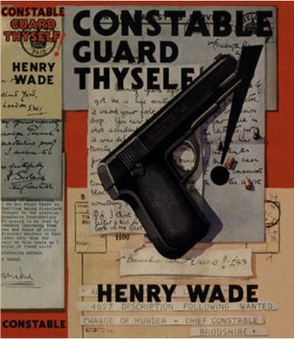
Constable Guard Thyself is a 1934 mystery detective novel by the British writer Henry Wade. It was the third in a series of seven novels featuring the character of Chief Inspector Poole, although it was preceded by the 1933 short story collection Policeman's Lot in which seven of the twelve stories had featured Poole. After his more experimental novel Mist on the Saltings Wade returned to the traditional detective model.

The Bell of Death is a 1939 mystery detective novel by Anthony Gilbert, the pen name of British writer Lucy Beatrice Malleson. It is the sixth in her long-running series featuring the unscrupulous London lawyer and detective Arthur Crook. It was published during the Golden Age of Detective Fiction. Reviewing it for the Times Literary Supplement, Maurice Percy Ashley commented "as usual with Mr. Gilbert’s stories this is exciting and well written, but it is so complicated that the reader can do little more than hold his breath".
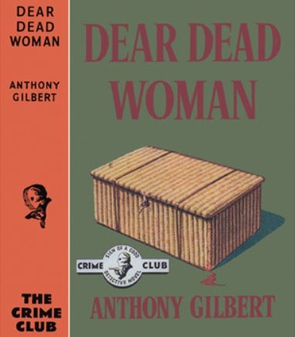
Dear Dead Woman is a 1940 mystery detective novel by Anthony Gilbert, the pen name of British writer Lucy Beatrice Malleson. It is the seventh in her long-running series featuring the unscrupulous London solicitor and detective Arthur Crook. In 1942 it was published in America under the alternative title Death Takes a Redhead.
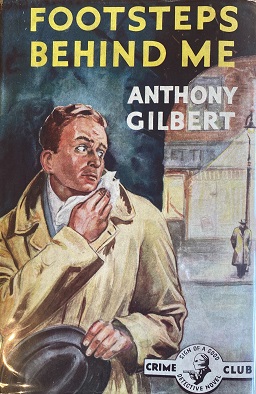
Footsteps Behind Me is a 1953 mystery detective novel by Anthony Gilbert, the pen name of British writer Lucy Beatrice Malleson. It is the twenty seventh in her long-running series featuring the unscrupulous solicitor and detective Arthur Crook. Crook first appeared during the Golden Age of Detective Fiction, but the series ran for several decades. It was published in the United States under the alternative title Black Death.
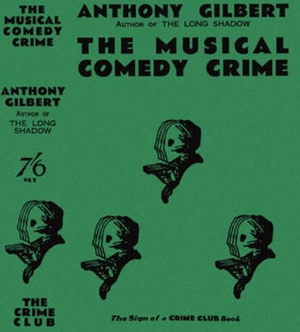
The Musical Comedy Crime is a 1933 mystery detective novel by Anthony Gilbert, the pen name of British writer Lucy Beatrice Malleson. It is the seventh entry of the series featuring Scott Egerton, her principal character before her better known creation Arthur Crook appeared three years later. A traditional whodunnit, it was published during the Golden Age of Detective Fiction.

The Tragedy at Freyne is a 1927 mystery detective novel by Anthony Gilbert, the pen name of British writer Lucy Beatrice Malleson, her first novel under the pseudonym. It introduced the amateur detective Scott Egerton, who was her principal character until the creation of Arthur Crook in Murder by Experts.

Death at Four Corners is a 1929 mystery detective novel by Anthony Gilbert, the pen name of British writer Lucy Beatrice Malleson. It is the third novel in a series featuring her amateur detective Scott Egerton.

The Mystery of the Open Window is a 1929 mystery detective novel by Anthony Gilbert, the pen name of British writer Lucy Beatrice Malleson. It is the fourth novel in a series featuring her amateur detective, the politician Scott Egerton. Unlike the rest of the series it was published by Gollancz rather than Collins. It takes the form of a locked room mystery, a popular branch of the genre during the Golden Age of Detective Fiction.

The Stoat is a 1940 mystery detective novel by the Irish-born writer Lynn Brock. It was the seventh and last novel in his series featuring the character of the Golden Age detective Colonel Wyckham Gore. It was also his last published work before his death three years later. It marked a return for Gore, who hadn't appeared in a novel since 1930.

Death Knocks Three Times is a 1949 mystery thriller novel by Anthony Gilbert, the pen name of British writer Lucy Beatrice Malleson. It is the twenty second in her long-running series featuring the unscrupulous London solicitor Arthur Crook, one of the more unorthodox detectives of the Golden Age.
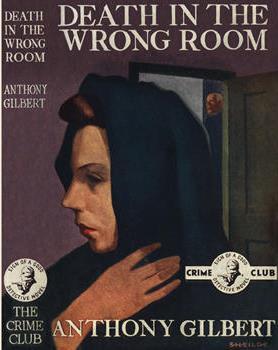
Death in the Wrong Room is a 1947 mystery thriller novel by Anthony Gilbert, the pen name of British writer Lucy Beatrice Malleson. It is the nineteenth in her long-running series featuring the unscrupulous London solicitor Arthur Crook, one of the more unorthodox detectives of the Golden Age.

The Scarlet Button is a 1944 mystery thriller novel by Anthony Gilbert, the pen name of British writer Lucy Beatrice Malleson. It is the fourteenth in her series featuring the London solicitor Arthur Crook, one of the more unscrupulous detectives of the Golden Age. It was published in the United States, initially under the same name and later with the alternative title Murder is Cheap.

For Murder Will Speak is a 1938 detective novel by the British author Alfred Walter Stewart, published under his pseudonym J.J. Connington. It is the thirteenth in a series of novels featuring the Golden Age Detective Chief Constable Sir Clinton Driffield. The title references a line from Shakespeare's Hamlet. It was released in the United States by Little, Brown and Company under the alternative title Murder Will Speak.

Tragedy at Ravensthorpe is a 1927 detective novel by the British writer Alfred Walter Stewart, published under his pseudonym J.J. Connington. It is the second in a series of seventeen novels featuring the Golden Age Detective Chief Constable Sir Clinton Driffield following on from Murder in the Maze. The American edition was published in Boston by Little, Brown and Company.
Sir Clinton Driffield is a fictional police detective created by the British author J.J. Connington. He was one of numerous detectives created during the Golden Age of Detective Fiction, making his first appearance in Murder in the Maze in 1927. He appeared in four subsequent novels by 1929 when Connington apparently wished to write him out following Nemesis at Raynham Parva. However, his replacement Superintendent Ross failed to gain the same level of popularity over two novels and Sir Clinton returned in the 1931 mystery The Boathouse Riddle. He went on to appear in a further eleven novels. The last entry Common Sense Is All You Need was published the year of Connington's death in 1947 and is set in wartime Britain.

Murder in the Maze is a 1927 detective novel by the British author Alfred Walter Stewart, published under his pseudonym J.J. Connington. It was the first of seventeen novels featuring his best-known character the Golden Age Detective Sir Clinton Driffield, Chief Constable of an English county. It takes the form of a classic country house mystery. First published in Britain by Ernest Benn, it was released in the United States by Little, Brown and Company.

The Ha-Ha Case is a 1934 detective novel by the British author Alfred Walter Stewart, published under his pseudonym J.J. Connington. It is the ninth in his series of novels featuring the Golden Age Detective Chief Constable Sir Clinton Driffield, the Chief Constable of a rural English county. A traditional country house mystery, the title refers to a Ha-ha a sunken fence hidden to the naked eye common on country estates. Unlike the other novels in the series which are set when they are written, this is dated a decade before its publication in 1924. In a review in the Sunday Times Dorothy L. Sayers wrote "There is no need to say that Mr. Connington has given us a sound and interesting plot, very carefully and ingeniously worked out."

To Love and Be Wise is a 1950 mystery detective novel by the British writer Josephine Tey. It was the fourth of six novels featuring Detective Inspector Grant of Scotland Yard during the Golden Age of Detective Fiction.

No Past Is Dead is a 1942 mystery detective novel by the British author Alfred Walter Stewart, published under his pseudonym J.J. Connington. It is the fifteenth in his series of novels featuring the Golden Age Detective Sir Clinton Driffield, the Chief Constable of a rural English county. It was published by Hodder and Stoughton in London and Little, Brown and Company in the United States.

With a Bare Bodkin is a 1946 detective novel by the British author Cyril Hare. It was the second in his series featuring the lawyer Francis Pettigrew and also saw the return of Inspector Mallet of Scotland Yard who had appeared in the previous book Tragedy at Law. The title is taken from the To be, or not to be speech in William Shakespeare's Hamlet. It was inspired by the author's time working for the Minister of Economic Warfare during the Second World War.



















